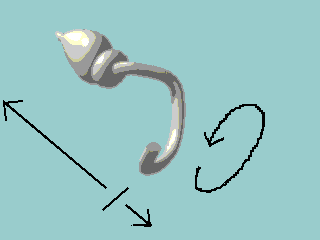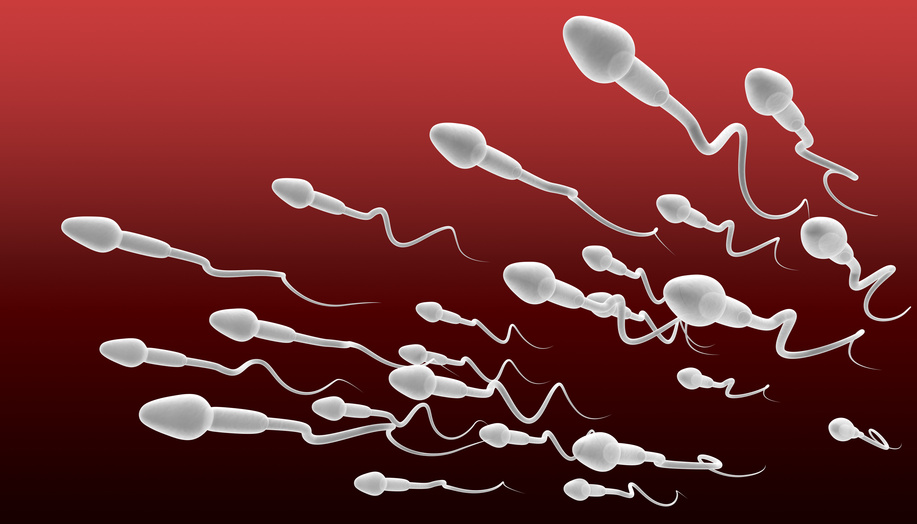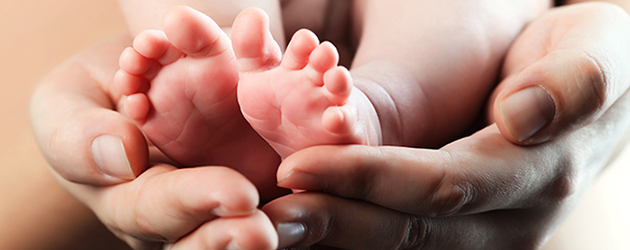What is sperm motility (movement)
Sperm motility is the ability of a man’s sperm to move properly through the female reproductive tract (following natural or artificial fertilisation) or through water (during external fertilisation such as IVF) to reach the egg.
Sperm motility can also be thought of as the sperm quality, which is an important factor in successful conception. Sperm that do not move properly will not reach the egg and fertilise it.
A man is considered fertile by the World Health Organization (WHO) guidelines if he has a minimum “progressive motility”, i.e. grade a+b. of 32%, equivalent to 4.8 million/ml (15 million / ml x 32%). Vitality must be a minimum of 60% live spermatozoa[1]”https://humupd.oxfordjournals.org/content/16/3/231“.
Examples
- A man can have a total number of sperm far over the WHO minimum limit of 15 million sperm cells per millilitre (for example 50 million), but if too few of them are motile (for example only 5%) he can still have poor overall sperm quality (less than 5 million Total Motile Spermatozoa per milliliter). This is because the total number of progressively motile sperm cells would be only 2.5 million per millilitre.
- However, if the sperm count is very high (for example 100 million per millilitre), then a low motility (for example 5%) might not matter, because the total number of progressively motile sperm cells would be 5 million / ml.
- Conversely, a man can have a low sperm count far less than the minimum 15 million sperm cells per millilitre (for example 10 million) and still have good overall sperm quality. This is achieved if his motility is higher than 50%, giving him a minimum of 5m sperm cells with good forward movement.

Classification of sperm motility
- Grade a, Motility IV or Straight moving: Sperm with progressive motility. These are the strongest spermatozoa and swim fast in a straight line.
- Grade b, Motility III or Zig-zag moving: (non-linear motility): These spermatozoa also move forward but tend to travel in a curved or crooked motion.
- Grade c, Motility II or Vibrating: These spermatozoa have non-progressive motility because they do not move forward despite the fact that they move their tails.
- Grade d, Motility I or Non-motile: These spermatozoa are entirely immotile and fail to move at all.
Low sperm motility
The medical term for reduced sperm motility is Asthenozoospermia (or asthenospermia). Complete asthenozoospermia, i.e. 100% immotile sperm cells in the male ejaculate, is reported at a frequency of 1 of 5000 men or 0.002%[2]”https://humupd.oxfordjournals.org/content/17/5/684“. Complete asthenozoospermia can be caused by metabolic deficiencies, such as the inability to ingest certain nutrients essential for sperm motility, ultrastructural abnormalities of the sperm flagellum (tail) and necrozoospermia (no live sperm).
www.amitamin.com/en/fertilsan-m New life deserves the best possible start!We provide the essential building blocks for this.
Asthenospermia decreases the overall sperm quality and is therefore a major factor in reduced fertility or infertility in men. The chance of pregnancy in such cases can be increased by ICSI[3]”https://humupd.oxfordjournals.org/content/17/5/684“.

Improving sperm motility naturally
There are a number of things a man can do to improve his sperm motility. These include lifestyle choices such as the elimination of fast food, nicotine and alcohol, regular exercise, restful sleep and the reduction of stress.
In addition, scientific studies have show that an increase in sperm motility can be achieved by taking the following food supplements:
- 2 g/day L-Carnitine + Vitamin E increases sperm motility 59% over eight months[4]”https://www.ncbi.nlm.nih.gov/pubmed/12568837“
- 3 g/day L-Carnitine increases sperm motility by 40% over three months[5]”https://www.ncbi.nlm.nih.gov/pubmed/8529529“
- 2000 mg/day Vitamin C increases sperm motility 39% in 2 months[6]”https://www.ncbi.nlm.nih.gov/pubmed/17004914“
- 4 mg/day lycopene increases sperm motility by 25% in 3 months[7]”https://www.ncbi.nlm.nih.gov/pubmed/12899230“
- 200 mg selenium + 400 IU Vitamin E improved motility, morphology or both in 53% of patients over 14 weeks[8]”https://www.ncbi.nlm.nih.gov/pubmed/21403799“
- Vitamin D (men low in vitamin D have lower sperm motility[9]”https://www.ncbi.nlm.nih.gov/pubmed/23042450“)
How to increase overall male fertility naturally

The sperm generation process is particularly sensitive to external factors. These include trauma (heat, physical force), energy and nutrient supply for the cells “under construction” as well as oxidative stress.
There are a number of things a man can do to improve his fertility. These include lifestyle choices such as the elimination of fast food, nicotine and alcohol, regular exercise, restful sleep and the reduction of stress.
In addition, scientific studies have show that an increase in sperm count can be achieved by taking the following food supplements:
- amino acids such as Arginine and Carnitine
- antioxidants such as Glutathione and and co-emzyme Q10
- trace metals such as zinc and selenium
- vitamins such as A, B9 (folic acid), C, D and E
- extracts such as pine bark extracts (Pycgnogenol)
These amino acids, vitamins and trace elements are naturally occurring nutrients and no side effects are to be expected. On the contrary, increasing the supply of such micronutrients causes significant health benefits such as a stabilisation of the immune system, a positive effect on cardiovascular circulation and skin and hair health.
There is therefore no medical reason not to implement a micronutrient rich diet for a minimum of six months to increase fertility. Ideally this should be carried on until successful conception.
VIDEO: Learn How To Read a Semen Analysis (video 2 of our video series)
More sperm movement-enhancing nutrients

Dr. Kooner is Deputy Director of The Advanced Fertility Center of Chicago and has been a Specialist in Fertility Treatment since 1999.
As well as the areas that the clinic specialises in general, he is particularly interested in managing oocyte donation, female same-sex couples, single women having sperm donation and those considering egg freezing.
Dr. Kooner regularly speaks at fertility meetings. He has published in national journals and constantly contributes to the fertility research and publications from Advanced Fertility Center of Chicago.
References











